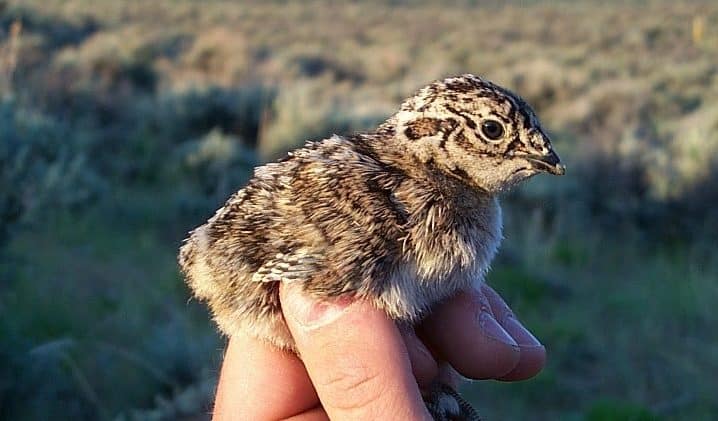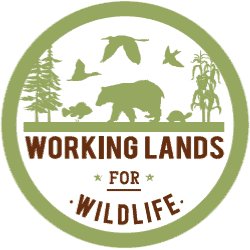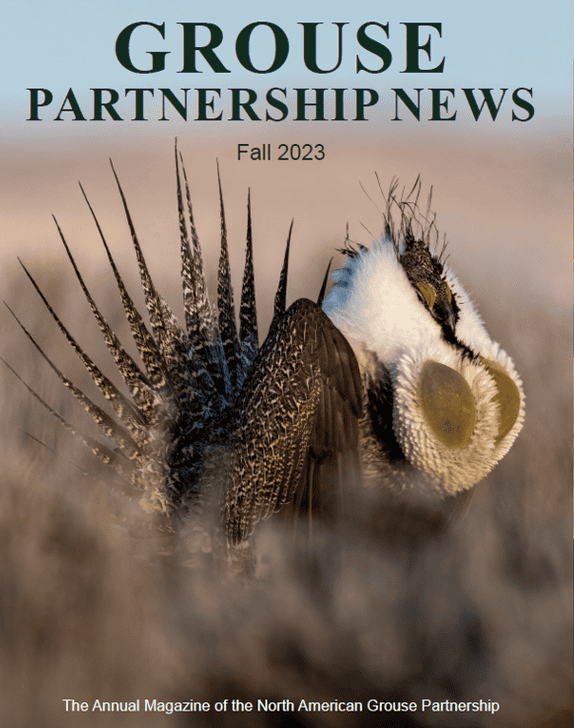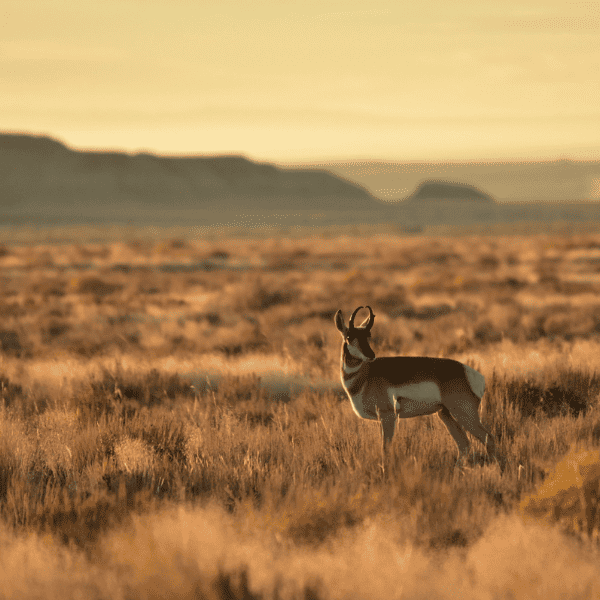
Texas Ranchers Gather for How-to on Wildlife-Friendly Grasslands
NEWS: More than 40 agricultural producers gathered recently at Muleshoe National Wildlife Refuge in Texas for an LPCI workshop on managing rangelands to improve wildlife habitat.
Introducing ‘Sagebrush Connections’, A Magazine About Proactive Conservation Partnerships
October 3, 2017
Sage Whiz Quiz | What Do You Know About Sage Grouse Chicks?
October 5, 2017By Quenna Terry, NRCS Public Affairs Specialist
When farmers and ranchers take time out of their busy schedules to attend a meeting, you can bet the topic’s compelling. For more than 40 agricultural producers who gathered recently at Muleshoe National Wildlife Refuge in Texas, the day’s topic was managing rangelands to improve wildlife habitat.

More than 40 farmers and ranchers attended the Landowner Wildlife Workshop at the Muleshoe National Wildlife Refuge in Texas. Photo: Quenna Terry, USDA-NRCS
Jordan Menge, range coordinator for the Natural Resources Conservation Service-led Lesser Prairie-Chicken Initiative (LPCI), organized the workshop. His cast of presenters drew from the many agencies and organizations that share the goal of conserving native wildlife and rural agriculture, including the USDA Natural Resources Conservation Service (NRCS), Quail and Pheasants Forever, Blackwater Valley Soil and Water Conservation District (SWCD), U.S. Fish and Wildlife Service, and the Texas Parks and Wildlife Department.
Many of those organizations offer assistance to ranchers to carry out habitat conservation, and the presenters showed how the available programs help ranchers manage range to benefit both wildlife and livestock.
Dr. Blake Grisham from Texas Tech University opened the workshop by sharing the life history and management of the lesser prairie chicken, drawing from research from the panhandle region. Lesser prairie-chicken populations need large tracts of high-quality prairie to survive and reproduce. Biologists consider the lesser prairie-chicken to be an “umbrella species” for habitat conservation because when habitat is optimal for this bird, they benefit countless other members of the Southern Great Plains.
Grisham explained that research still hasn’t fully determined all of the factors contributing to lesser prairie-chicken population declines, but that studies show that habitat fragmentation plays a key role. The additional of vertical structures to the prairie landscape—both in the form of tree encroachment and built structures—adds to that fragmentation. Grisham noted that research will continue to inform our understanding of the most effective management practices for lesser prairie-chicken habitat. He credited NRCS and its LPCI partnership for supporting his research.

Prescribed fire is an important management tool for improving grasslands for bird and herd. Photo shoes recently burned grasslands at the Muleshoe National Wildlife Refuge. Photo: Quenna Terry, USA-NRCS
NRCS Range Management Specialist Stan Bradbury then shifted the conversation to the practice of prescribed grazing. He emphasized the importance of understanding plant growth, and discussed ways to provide nesting cover for prairie-chickens and other ground-nesting birds through grazing deferment.
Bradbury described how range managers can influence grassland habitat through their choice of where to locate water development, salt and minerals, and fences. Careful planning can help change the composition of plant communities and promote better grazing distribution and utilization.
Bradbury noted how grazing plans are tailored to the particular needs and characteristics of each ranch. “There isn’t a standard grazing system that works for everyone,” Bradbury said. He stressed that careful planning and preparation for drought is an essential part of grazing operations. “Drought plans need to be developed when it’s raining straight down.”
Jordan Menge described ways to improve quail habitat, stressing that, like prairie-chickens, both bobwhite and scaled quail do better in native grasses rather than monocultures. Richard Baker from the U.S. Fish and Wildlife Service rounded out the day with an introduction to prescribed burning as an effective tool for improving grassland health.

Jordan Menge, range coordinator for the NRCS-led Lesser Prairie-Chicken Initiative, organized the Landowner Wildlife Workshop and presented on improving quail habitat. Photo: Quenna Terry, USDA-NRCS
To accomplish grassland habitat improvements, landowners can take part in a variety of voluntary programs that offer technical and financial assistance. Since the array of programs can be confusing, representatives from each of the assistance agencies described the particular niche of their programs.
NRCS District Conservationist Angel Garcia described NRCS programs, like the Environmental Quality Improvement Program (EQIP) and Conservation Stewardship Program (CSP), which landowners can take part in to carry out prescribed grazing, drought planning, prescribed fire, woody plant removal, and other practices beneficial to wildlife habitat. For landowners within the active range of the lesser prairie-chicken, additional NRCS funds are available through LPCI.
Ryan Jones from the Western Association of Fish and Wildlife Agencies (WAFWA) discussed programs available through his organization, and Farm Service Agency Executive Director Mark Tucker shared information on the Conservation Reserve Program (CRP), Grassland Reserve Program (GRP) and State Acres for Wildlife Enhancement (SAFE). Don Call of Texas Parks and Wildlife described the Texas Playa Conservation Initiative.
Farmer and rancher Jerry Don Glover, past chairman of the state FSA committee, attended the program. Glover commented this was one of the best wildlife programs he had been to in a while, stating, “I came to the program because I’ve always been interested in how we can increase wildlife on our land, particularly for pheasant and quail.”
For more information about conservation assistance programs for improving wildlife habitat, contact your local NRCS office at the USDA Service center in your county.
The Lesser Prairie-Chicken Initiative, led by the USDA’s Natural Resources Conservation Service, is a partnership-based, science-driven effort that uses voluntary incentives to proactively conserve America’s western rangelands, wildlife, and rural way of life.




